Fire Emblem: Three Houses (Nintendo Switch) Review
By Rudy Lavaux  25.07.2019
25.07.2019

It would be hard to imagine a world today where western Nintendo players were not enamoured with the Fire Emblem series. The franchise went from being a Japan-exclusive affair, to Roy and Marth becoming beloved mainstays of the Smash Bros. series, then to the first forays into western territories on Game Boy Advance, Gamecube, Nintendo DS, and then Wii, where the franchise did not evolve much beyond its initial traditional formula. It was however Fire Emblem Awakening that really marked the big turning point in the popularity of the series outside of its country of origin. This was, no doubt, helped by its fantastic exposure of characters' personality traits through various activities that did not involve fighting. While the remake of Fire Emblem Gaiden, Fire Emblem Echoes: Shadows of Valentia, did bring back a bit more of the classic feel of Fire Emblem, the ever stronger focus in Fire Emblem Fates on character development and activities off the battlefield, clearly showed where the series was being steered. Fire Emblem Heroes on mobile reducing battles to their simplest incarnation, yet focusing on the characters themselves and the aspect of collecting them made this even more obvious. Cue in Fire Emblem: Three Houses, where the traditional themes of medieval battles and rivalries meet a familiar school setting, reminding of Harry Potter's own Hogwarts.
A lot of people out there probably already know what the Fire Emblem series is all about. However with the Switch proving to be a very popular platform and attracting more and more new players to try out Nintendo franchises for the first time, a reminder of what the series plays like is in order. Fire Emblem games typically offer a story revolving around medieval themes of conquest, treason, alliances and rivalries between kingdoms, empires, and religious institutions. In that regard, Fire Emblem: Three Houses starts out slightly different, but ultimately addresses those same points. Our story begins as a mercenary called Byleth, accompanied by its father Jeralt, comes across a village being attacked by bandits. They are soon joined by three students from the nearby monastery of Garreg Mach, an academy for future officers. After dispatching the ruffians, the group goes back to said academy where Byleth's fantastic abilities get acknowledged and he finds himself enrolled as a teacher who could impart its valuable knowledge to the future military leaders of three different territories.
Byleth can be renamed by the player, and its gender be picked as well, though unlike some previous entries in the series, the avatar's appearance cannot be customised. It turns out that Jeralt knows Rhea, the high priest of the monastery, who also acts as the de facto headmaster of the academy. Jeralt used to be part of the mercenaries of the church of Seiros, and his relationship to Rhea is shrouded in mystery. Add to that the fact that Byleth keeps getting visions of a girl named Sothis appearing in his dreams... and the fact that Byleth's and Jeralt's ages are unknown. A plot full of mysteries indeed, even for a Fire Emblem instalment - in fact, perhaps even more so than any game in the series, until now.
In all Fire Emblem titles, it's up to the player to take out a set amount of units to the battlefield in each chapter to progress the story, and issue commands to each unit to move a certain amount of squares, attack, heal, use items, etc, until the objective of that chapter's battle is met. The Fire Emblem series is very much rooted in, and even a precursor of the Tactical-RPG genre. Three Houses follows the exact same formula, but with a few extra twists. Because all units are supposed to be future officers, those can be assigned a 'battalion' that will accompany them in battle. Those battalions confer stat bonuses to their leader in combat when he or she fights other enemy units one-on-one but may also grant extra abilities. Those include crippling foes in some way like preventing them from moving on their next turn or breaking their defences when it comes to giant beasts.
Battalion actions are referred to in-game as 'Gambits.' Those can be selected in lieu of a regular attack and can only be performed a set, low amount of times per battle. Battalions however require a certain level of proficiency to be used, just like weapons and magic types in fact. This is called 'authority,' and better battalions with better effects require a certain amount thereof to be hired, while a higher level of authority also unlocks extra abilities that can affect how strong the effects of gambits can be. Ultimately, the presence of battalions, shown front and centre in promotional footage leading up to the release day, do not fundamentally change the core gameplay of the Fire Emblem series.
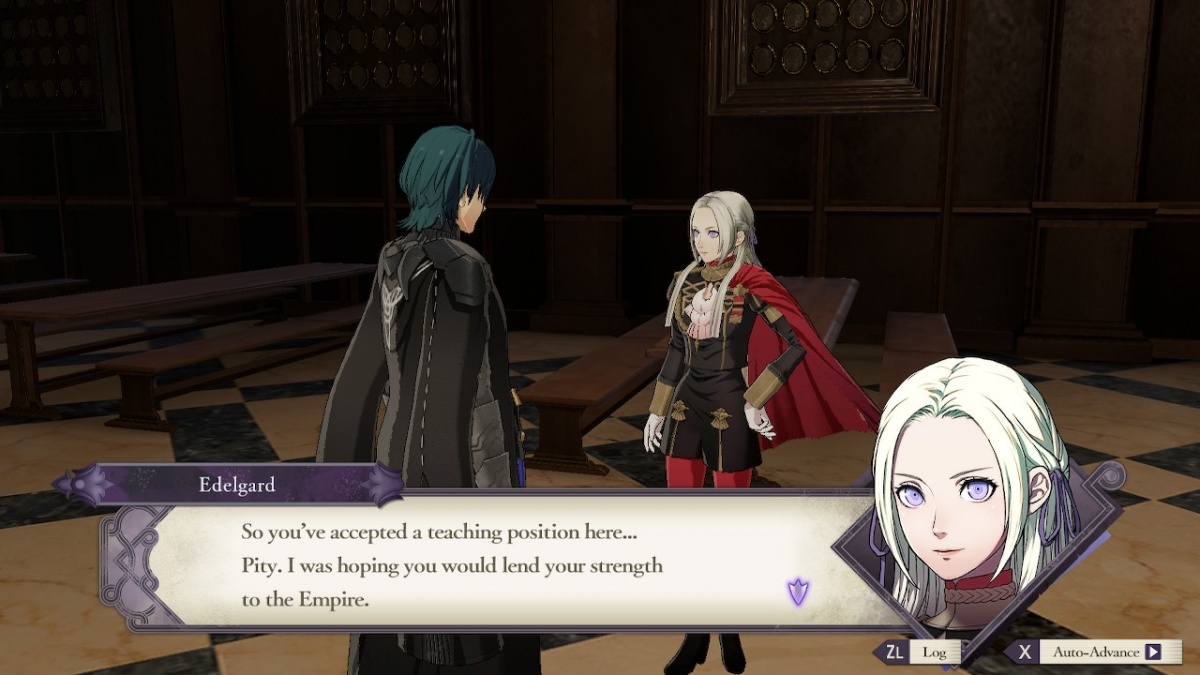
This is just an extra layer of depth that can be taken into account while devising tactics and building a functioning, fearsome little army. Moreover, their presence alongside the units being controlled in battle, finally gives a bigger sense of scope to said confrontations, which until now looked more like brawls between two opposite gangs, with the amount of fighters on screen never exceeding a few dozens. Now, with the close up camera setting which zooms onto a selected unit and shows the battlefield and soldiers in realistic proportions relative to their surroundings... this really does look like war taking place. Koei Tecmo took part in the development of Fire Emblem: Three Houses, and this is likely where their expertise came into play. In fact, it wouldn't be surprising if part of the game engine, or maybe even all of it, was based on Koei Tecmo's own engine powering Fire Emblem Warriors. Still on the topic of newly added elements to the Fire Emblem formula, 'adjutants' also come into play; partner units that pair with others to lend extra support, as well as the apparent absence of the traditional weapon triangle, where swords beat axes, axes beat spears, and spears beat swords.
Those don't seem to matter nearly as much as certain weapons having specific properties against given enemy types by default. Rather, sword users for instance learn the Axebreaker ability as their sword proficiency reaches a high enough level, giving them an edge on axe users. Furthermore, increasing any weapon's skill level unlocks specific weapon arts, giving units extra attacking options that can grant them extra strength or even improved range. That's right, weapon arts as introduced in Fire Emblem Echoes: Shadows of Valentia are back, and work in much of the same way, except this time they consume several units of "weapon durability" with each use. Indeed, weapon durability is also back after being absent for a few games, however magic tomes do not exist anymore in the same way as they used to. Instead each character can learn magic and have only a few uses or "charges" of each spell that they will be able to use for an entire battle.
Naturally the usual difficulty options are present in the form of Normal and Hard being selectable from the start and Classic and Casual modes are now very much here to stay. As usual, Classic mode brings the traditional flavour of Fire Emblem to the table, where defeated units remain dead for good for the rest of the game and never come back, while casual mode only makes them retreat from the current battle and brings them back afterwards.
For those willing to stick to Classic mode, bookmarks are still present allowing to save in the middle of battle, but those are of the kind that disappear once they are reloaded, which means no saving in the middle of a battle in the hope of reloading later if things get ugly. Instead, the aforementioned character Sothis grants Byleth the "Divine Pulse" power, which lets the player rewind events to a previous point in the battle so as to try and get a different outcome. This can only be performed three times per battle at first but more pulses unlock later through other optional activities. However, this new feature cannot be exploited to try and re-roll the accursed dice of RNG, such as to get better stat growths on level-up should they prove lousy the first time around, or even to try to overcome unfavourable accuracy percentages.
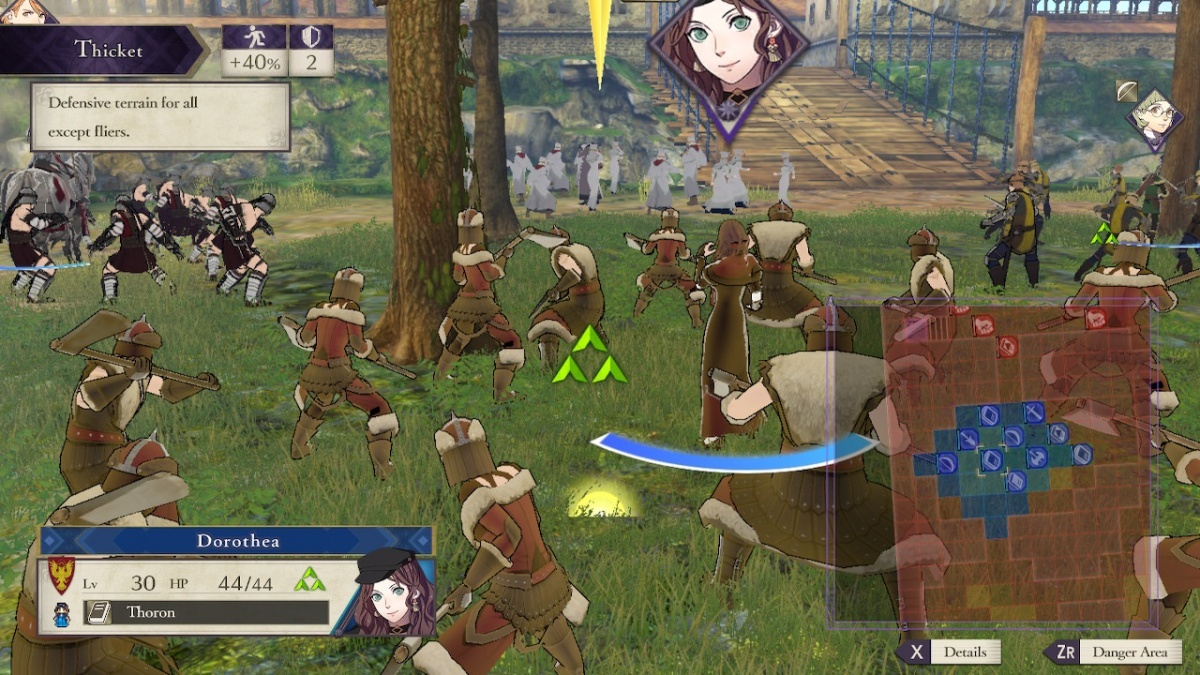
That would have proven quite game-breaking indeed. It is worth noting that, conveniently, pressing the L+R+Select (Minus) +Start (Plus) buttons together soft resets the game, so a permanent save can be reloaded faster than with rebooting the game entirely. All in all, the core gameplay of the franchise is there, but just sufficiently remixed that it should still feel familiar yet fresh. It's a careful balance of old and new that should please everyone.
Recent Fire Emblem games since Fire Emblem Awakening, but more importantly Fire Emblem Fates were far from being all about fighting and tactics however. Those put a stronger emphasis on other activities, outside of battle, than any other episode before. In-between chapters, players would be invited to share moments of their units' lives, interacting with one another in public baths, or doing some gardening together and so on. The player's army would gather back at their castle in-between battles as they keep advancing on a world map. In Three Houses however, that sense of progressing and exploring a wider world is somewhat lost in favour of a perception of the passage of time.
Indeed, social activities can only be experienced on select days and dates on a calendar while the actual traditional battles that progress the story happen on dates set in stone, very much like deadlines that can't be pushed back. Exploring the monastery on foot in third person view, taking certification exams to unlock new classes for units to convert to or taking optional battles, like Paralogues or side-quest fights can only be done on Sundays for example. Instructing students to help them moving up on a weapon or magic type proficiency is done on Mondays on the other hand. The calendar is also dotted with other events like holidays or students' and teachers' birthdays, which give more opportunities for bonding with those specific characters. Activities while exploring the monastery, such as inviting students to share a meal, inviting them for tea or even faculty training from other teachers consumes activity points. The same goes for taking on optional battles. The amount of available points goes up as Byleth grows as a teacher, through its teacher level.
At the start of the game, Byleth is tasked with the difficult decision of picking which house he or she wants to teach. Each house comes with its own focus on certain types of fighting, such as the house of the black eagle having many magic users for example. However, it will soon be possible to recruit characters from other houses to join Byleth's class. This all boils down to Byleth being skilled in certain things, and having reached a high enough value in a certain stat. Some characters will not be motivated to join unless Byleth appears to be a great teacher for a sword user for example, thus requiring his or her sword skill and strength stat to be high enough before that extra character can join. Fire Emblem: Three Houses appears to ditch completely the recruitment of enemy units on the battlefield, sadly, but this new approach which blends the school setting and the sense of character progression with the classic act of recruiting new units works surprisingly well too. It may prove more tedious though, since the requirements can be more demanding. Byleth starts out as more of a physical character, so leading him or her down the path of being a good magic teacher for example, to recruit other magic users, can and will be time consuming.
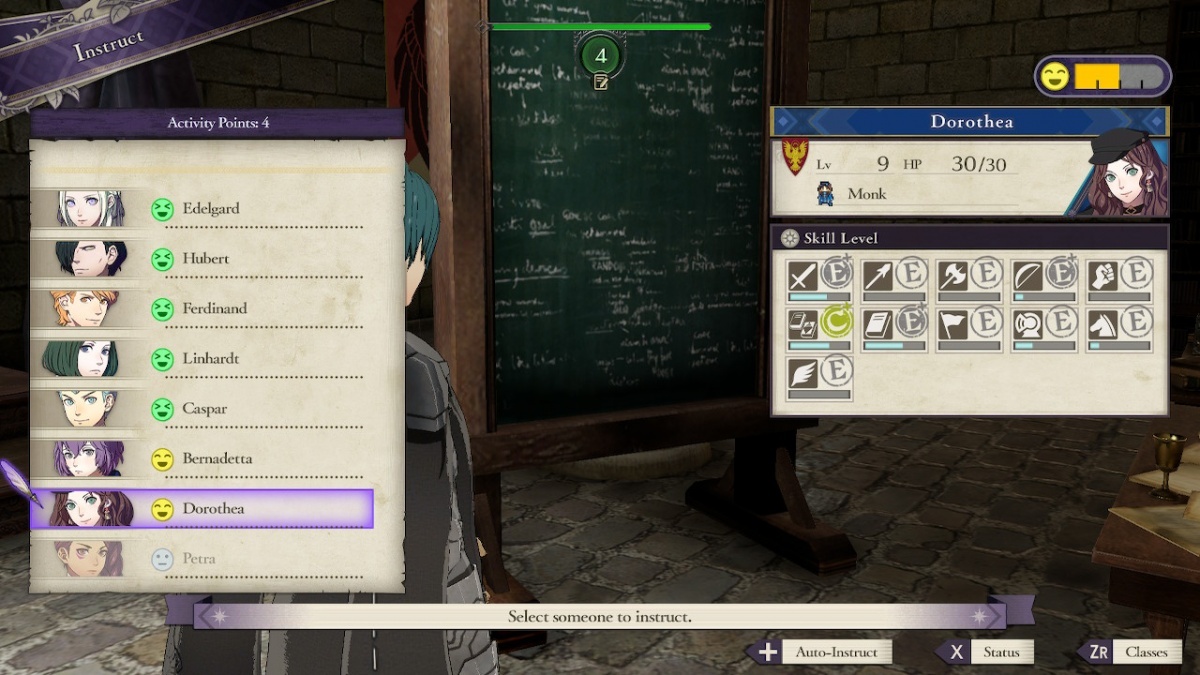
Thankfully, while time is ever moving forward in the game and occasions to take optional battles to grind skill, stats and levels may not be aplenty, when they happen, optional battles can be retreated from at any time to be restarted from the beginning while keeping any experience earned without consuming any activity points. Furthermore, in normal difficulty at least, there's always an optional battle open that can be taken and completed without consuming any AP while keeping the rewards. This can be exploited to let Byleth become good enough at anything to finally get those characters from other houses that seem so enticing. Even other teachers can join after a while, though the requirements for those are not so plainly obvious at time of writing.
The overall impression left by Fire Emblem: Three Houses is therefore extremely positive, except for one sticking point: visual presentation and performance. It does not quite manage to impress in that area. Character art is a matter of taste, and while it certainly is decent and far from being the worst the series has seen - that title would fall on some of the designs seen in Fire Emblem Heroes - it leaves a bit to be desired compared to the greatness of Awakening and Fates. Additionally, cut-scenes are always displayed against pre-rendered backdrops that appear to be either of very low resolution, or perhaps compressed too much, showing visible artifacts. This sort of breaks the intended illusion that the scene is really happening in the location it is supposed to be. Then, unfortunately, there is a strong omnipresence of aliasing visible throughout in every scene. This can be perhaps attributed to both the black outline of characters strongly contrasting with their surroundings, and the implementation of dynamic resolution. In docked mode, it appears to target 1080p and in handheld mode 720p. However, as soon as a lot of alpha transparencies come into view, or if too many characters are displayed, the resolution can dip below that number in both cases, leading to more visible jagged edges.
Lastly, some of the low resolution textures used on the character models themselves, which can be viewed in extreme close ups in this one, can be quite jarring. As for performance, it is hard to tell whether or not the frame rate is capped at 30, or if it is simply uncapped, but hovering rather stably around that mark. With that being said, running down long always during explorations can sometimes show what appears to be slow down, likely when a great amount of elements are being loaded in at the same time. This is different from frame drops, but it is equally as distracting when it happens. In conclusion however, none of those weaknesses come close to making the experience any less addicting. Fire Emblem: Three Houses remains an excellent title and entry in the series, even with those visual shortcomings in mind. It is just that, this being a Switch title, more ambition in the visual stakes was expected. With that being said, even Fire Emblem Awakening did not quite fully use the potential of the 3DS and had its own shortcomings in that regard. That never kept the latter from being a fan favourite. Maybe a future entry on the Switch will finally bring that huge visual step up that was hoped for here.
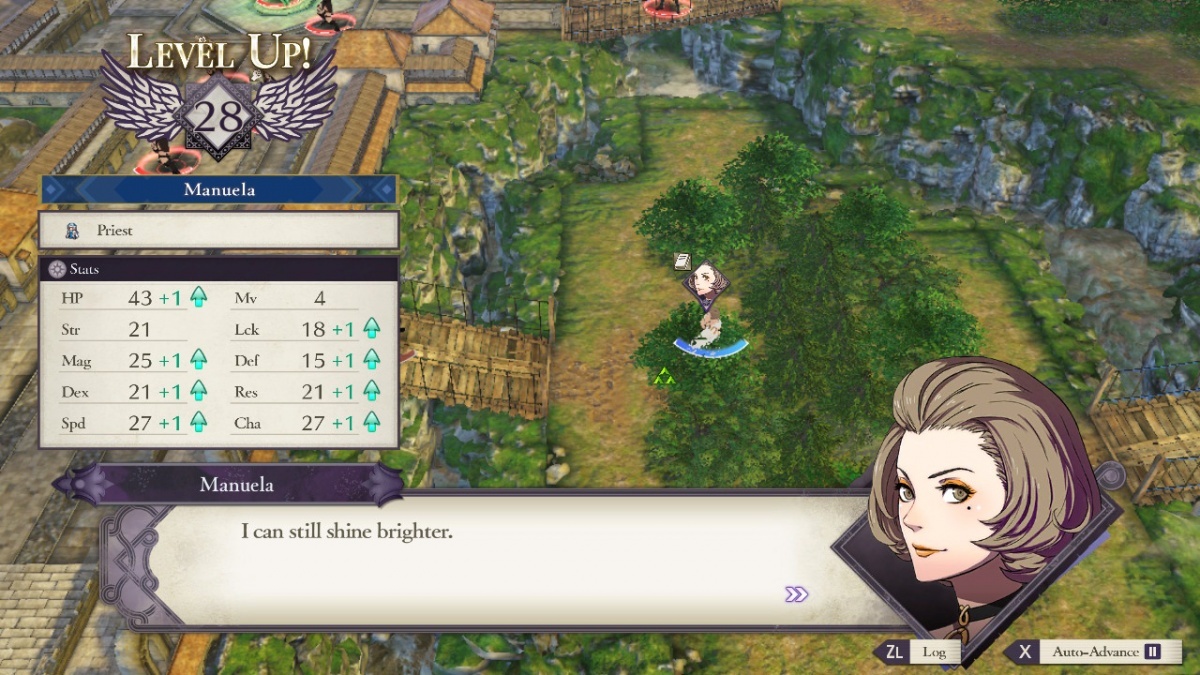
Cubed3 Rating
Exceptional - Gold Award
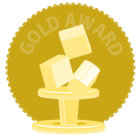
Fire Emblem: Three Houses can best be summed up as a carefully crafted mix of old and new that feels comfortable to pick up, though perhaps its new mechanics take a while to get accustomed to. Its visual presentation may be slightly underwhelming, and not quite yet the ambitious step-up into the realm of HD that it could have been, however it is so captivating and addictive in every way that those blemishes should absolutely not take away from the exceptional display of balance, and the blend of the new school setting into the very roots of its gameplay. It is an all-round very comprehensive display of mastery on Intelligent Systems' part.
Comments
Comments are currently disabled

 Sign In
Sign In Game Details
Game Details
 Out now
Out now  Out now
Out now  Out now
Out now  Out now
Out now  Subscribe to this topic
Subscribe to this topic Features
Features





 Top
Top

